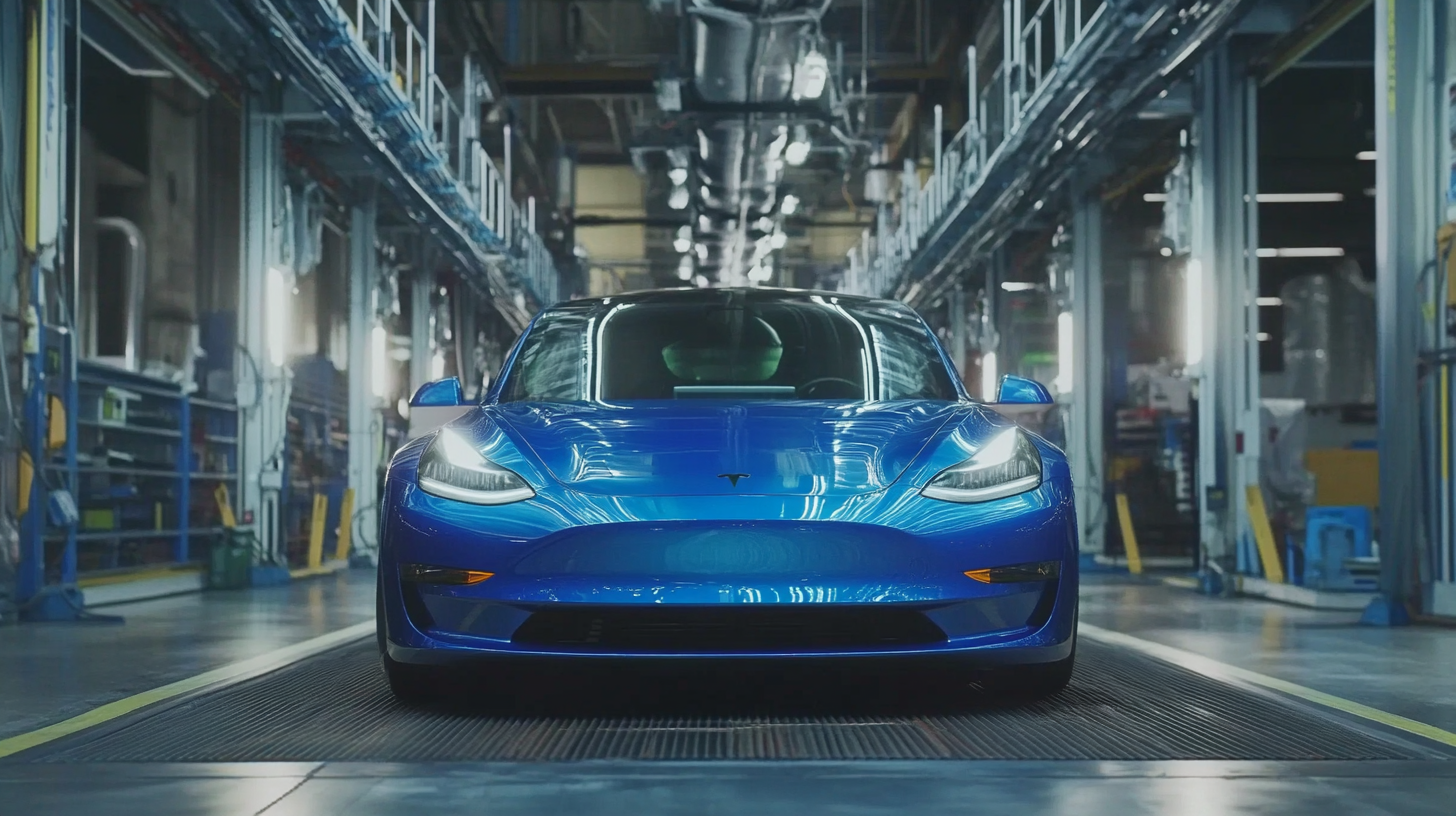As the trade tensions between the United States and China continue to escalate, many sectors are experiencing significant challenges. However, amidst these tariff hurdles, Chinese manufacturing is not only surviving but thriving, particularly in the electric vehicle (EV) market. One remarkable innovation that exemplifies this resilience is the EV Wallbox, a cutting-edge charging solution that caters to the growing demand for electric vehicles. This blog explores how Chinese manufacturers are leveraging technology and innovation to overcome the economic obstacles posed by tariffs, while the EV Wallbox shines as a beacon of advancement in sustainable transportation. In this ever-evolving landscape, the ability to adapt and innovate is paramount, and the Chinese manufacturing sector has proven it is up to the challenge, making significant strides in producing advanced, efficient, and user-friendly EV Wallbox solutions that are helping to shape the future of electric mobility.

The Resilience of Chinese Manufacturing in a Tariff Era
Despite the ongoing challenges posed by US-China tariffs, Chinese manufacturing continues to thrive, showcasing remarkable adaptability and innovation. According to a recent report by the International Trade Administration, China's manufacturing output reached approximately $4 trillion in 2022, making it the largest manufacturing economy in the world. This resilience is particularly evident in sectors such as electric vehicles, where China has swiftly emerged as a leader in EV wallbox technology, facilitating widespread electrification efforts.
In navigating the complexities of tariffs, Chinese manufacturers are employing strategic measures. One key approach is diversifying supply chains and enhancing local production capabilities. A study by McKinsey highlights that more than 70% of manufacturers in China are exploring alternatives to reduce reliance on foreign components, which not only mitigates tariff impacts but also bolsters domestic innovation.
**Tip:** Companies aiming to enhance their competitiveness in this tariff-laden landscape should invest in technology and innovation. Emphasizing R&D can lead to breakthroughs that reduce production costs and improve product quality, making firms more resilient amidst trade uncertainties.
Furthermore, fostering partnerships with local suppliers can create a more robust supply network. By tapping into local resources and expertise, manufacturers can streamline operations, cut down lead times, and ultimately deliver better value to consumers while navigating the challenges posed by tariffs.

Amidst ongoing tariff challenges between the US and China, the landscape of Chinese manufacturing is witnessing a remarkable transformation, notably in the realm of electric vehicle (EV) wallbox technology. These innovations are not just responding to market demands; they are driving growth and reshaping the automotive charging infrastructure. As consumers increasingly embrace electric vehicles, the need for efficient and reliable charging solutions has never been more paramount. The latest EV wallbox models are designed with cutting-edge technology, offering faster charging times, user-friendly interfaces, and smart features that optimize energy usage.
Moreover, Chinese manufacturers are leveraging advancements in connectivity and automation to enhance the functionality of EV wallboxes. Integration with home energy management systems allows users to monitor their energy consumption in real-time while taking advantage of lower rates during off-peak hours. This not only promotes sustainable energy practices but also makes EV ownership more appealing and economical. By prioritizing innovation in wallbox technology, Chinese companies are not merely adapting to challenges but are setting the stage for a future where electric vehicles are seamlessly incorporated into everyday life.

Chinese manufacturers are demonstrating remarkable resilience in the face of US-China tariff challenges, employing innovative strategies to maintain their competitiveness in the global market. According to a report from the China Institute for International Studies, despite the imposition of tariffs that have raised costs, the manufacturing sector has adapted by investing heavily in automation and technology. In fact, data from the National Bureau of Statistics of China shows that capital investment in industrial robots increased by 32% in the past year, allowing for enhanced efficiency and reduced dependence on imported components.
Moreover, manufacturers are also diversifying their supply chains. A survey by Deloitte indicates that 64% of Chinese companies are exploring alternative markets and sourcing strategies to mitigate the impact of tariffs. By establishing manufacturing bases in Southeast Asia and other regions, they not only minimize costs but also achieve a more significant presence in emerging markets. The innovative development of products, like the next-generation EV wallbox, exemplifies how companies are not merely surviving but thriving, meeting the growing global demand for electric vehicles while navigating complex trade dynamics. This proactive approach is evident as the EV market in China is projected to reach $1 trillion by 2030, highlighting the pivotal role of manufacturing innovation in overcoming tariff hurdles.
| Manufacturer | Country | Product Innovation | Tariff Strategy | Export Volume (Units) |
|---|---|---|---|---|
| Xiamen G. S. Technology | China | Smart EV Wallbox with AI Charging | Localizing supply chain | 50,000 |
| Shenzhen Electric Co. | China | Fast Charging Wallbox | Diversifying markets | 30,000 |
| Beijing EV Solutions | China | Wireless Charging Technology | Increasing production efficiency | 20,000 |
| Guangzhou Tech Innovators | China | Compact Smart Wallbox | Partnerships with local distributors | 15,000 |
| Shanghai E-Charge | China | Multi-Functional Charging Station | Investing in R&D | 40,000 |
China's manufacturing sector has shown remarkable resilience in the face of ongoing economic challenges, particularly in light of the tariffs imposed by the United States. As global markets face uncertainties, Chinese manufacturers have taken proactive steps to innovate and streamline their production processes. This adaptability not only showcases the strength of China's manufacturing capabilities but also sets a competitive tone in the global arena.
One such example is the emergence of cutting-edge technologies, like the EV Wallbox, which underscores the shift towards sustainable energy solutions. This innovation reflects a broader trend within Chinese manufacturing to pivot towards high-tech and eco-friendly products. As the world increasingly prioritizes sustainability, Chinese companies are positioning themselves as leaders in this critical market. Through their continuous improvement and a focus on quality, they are not only navigating trade challenges but also contributing significantly to global economic dynamics.
This pie chart illustrates the composition of various sectors within Chinese manufacturing, highlighting the dominant industries contributing to its robust economic performance despite challenges posed by US tariffs.
Chinese manufacturing is entering a transformative phase, particularly in the realm of electric vehicles (EVs). Recent reports indicate a significant acceleration in the production and adoption of new energy vehicles, driven by the global shift towards sustainability and innovation. With the production capacity of batteries projected to double within the next five years, Chinese manufacturers are well-positioned to lead this burgeoning market. The advancements in battery technology not only enhance the performance and efficiency of EVs but also address the rising consumer demand for environmentally-friendly transportation.
Furthermore, the insights from the 2024 automotive industry report underscore the importance of connectivity, automation, sharing, and electrification in reshaping the automotive landscape. As traditional gas-powered vehicles face declining sales, Chinese manufacturers are accelerating their innovation efforts to capture a sizable share of the EV market. The development of advanced EV technologies, including smart charging solutions and autonomous driving features, is set to further bolster China’s manufacturing capabilities, ensuring that it remains at the forefront of global automotive advancements in the coming years.
This chart illustrates the growth of electric vehicle (EV) production in China from 2018 to 2023. Despite challenges posed by US-China tariffs, Chinese manufacturing, particularly in the EV sector, has shown significant resilience and growth, with production numbers increasing dramatically each year, forecasted to reach 5 million units by 2023.
